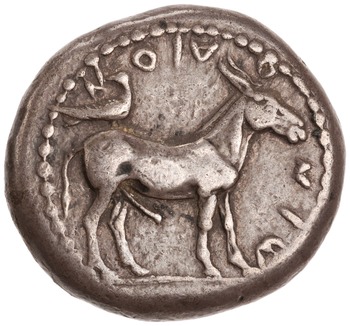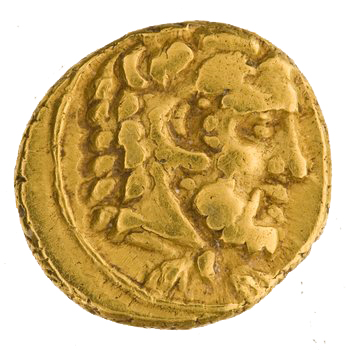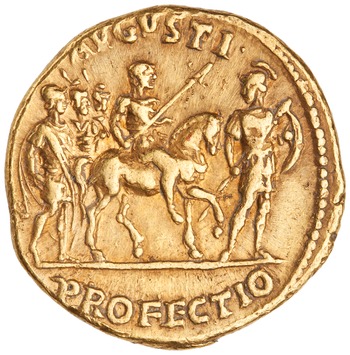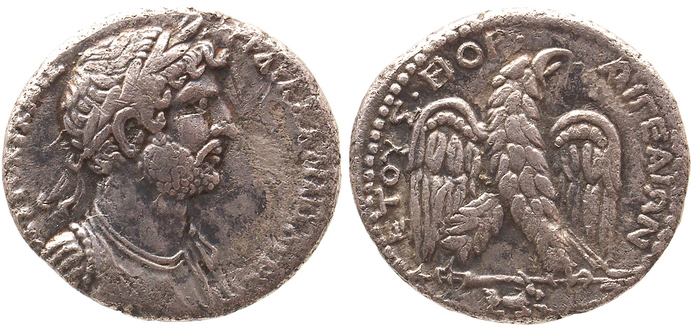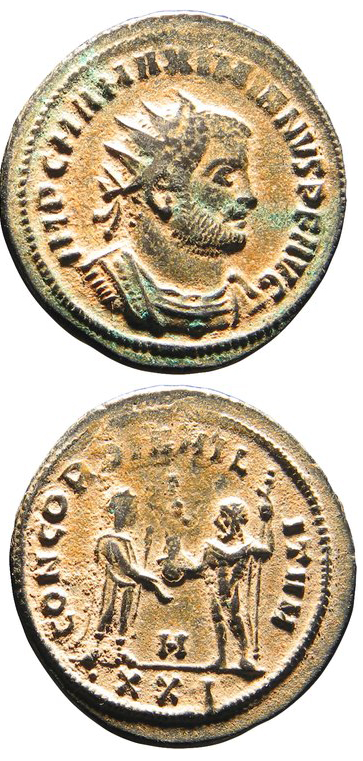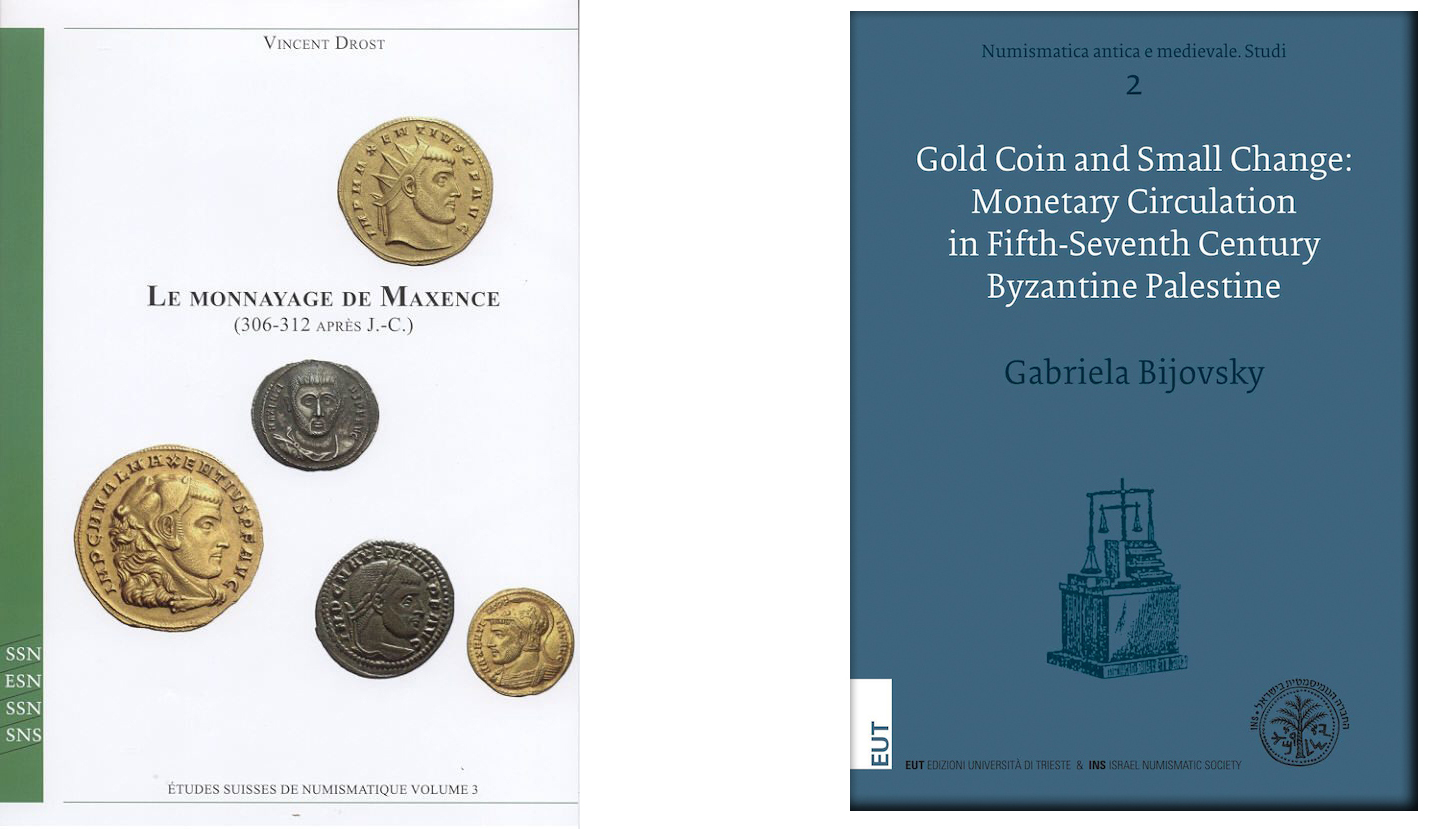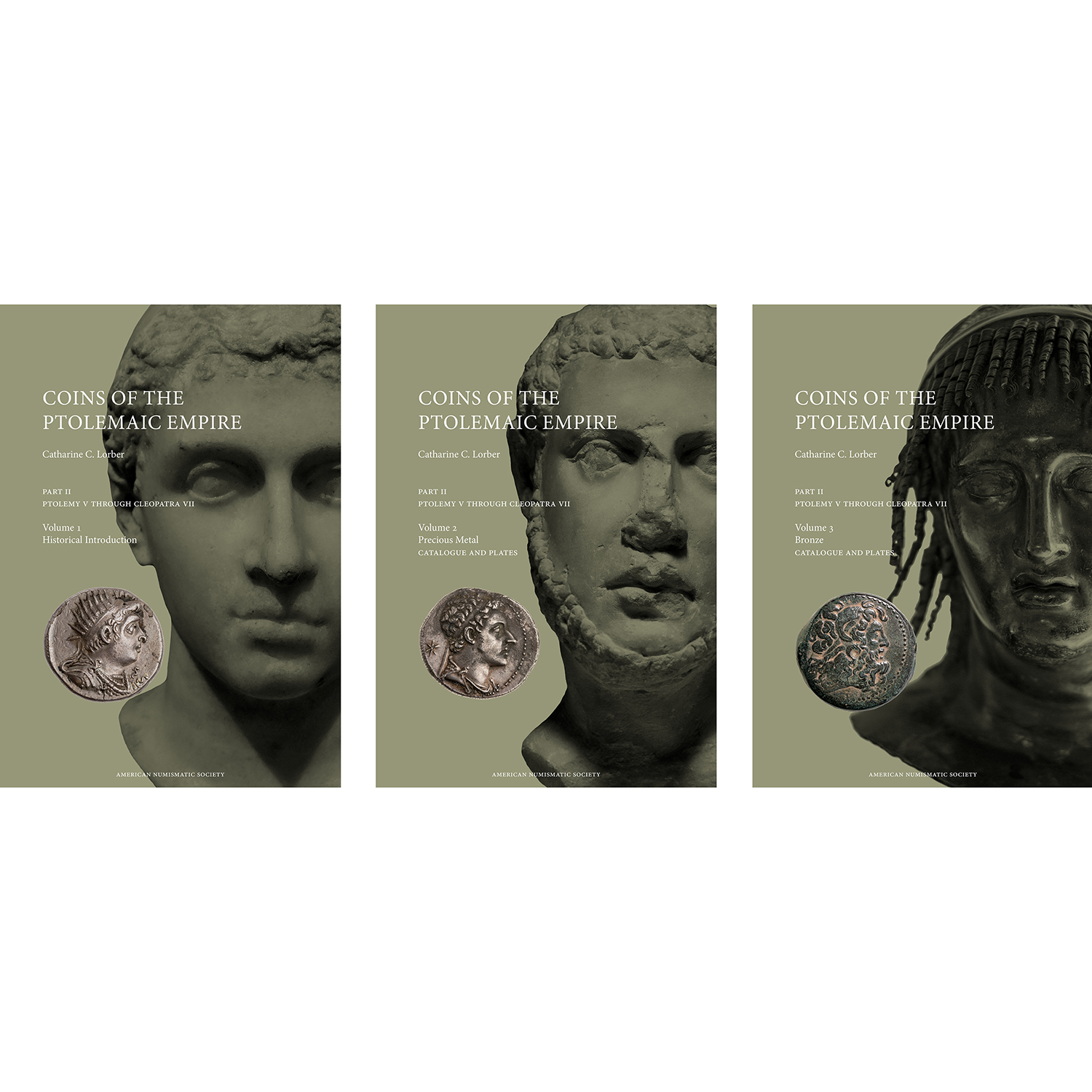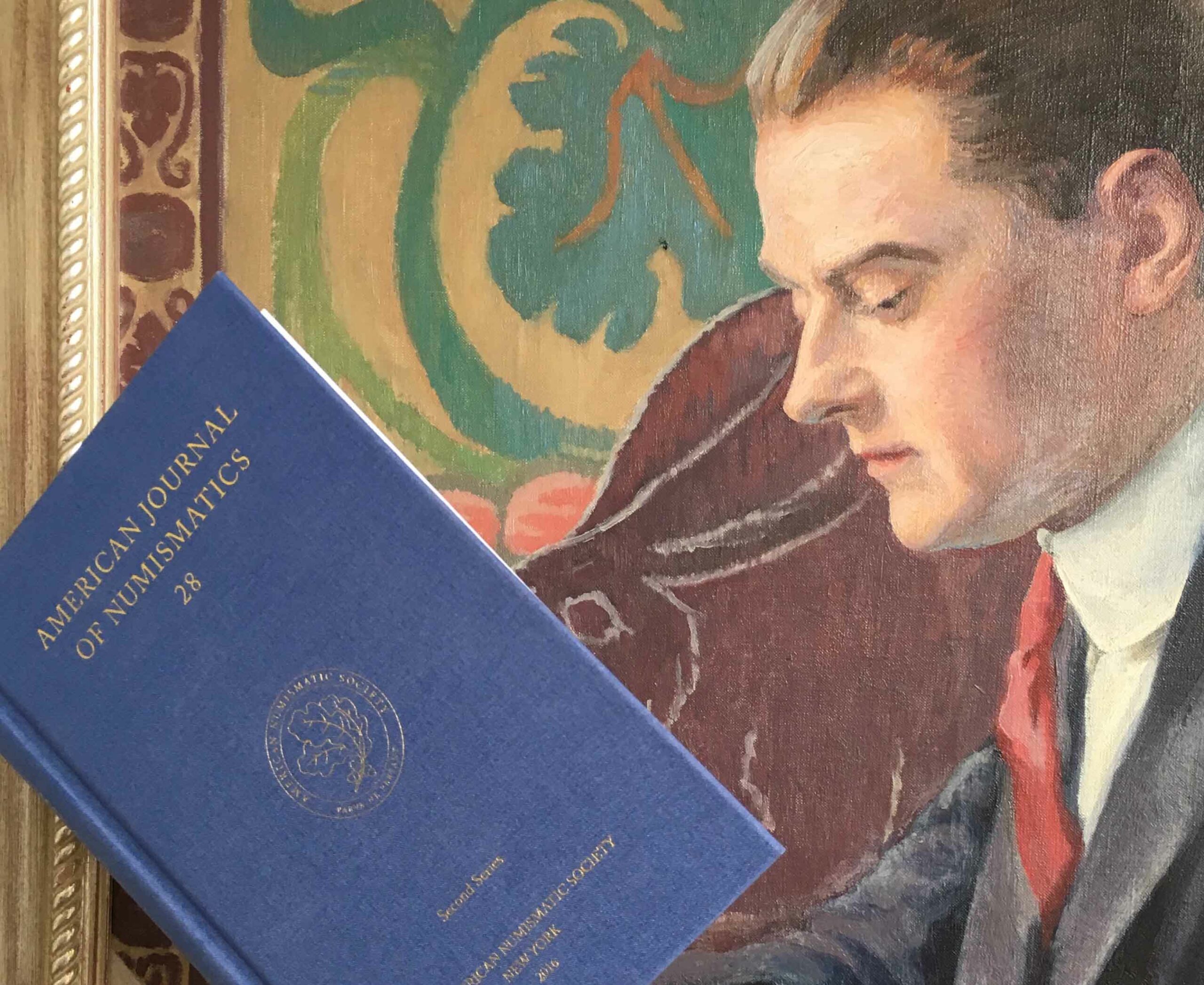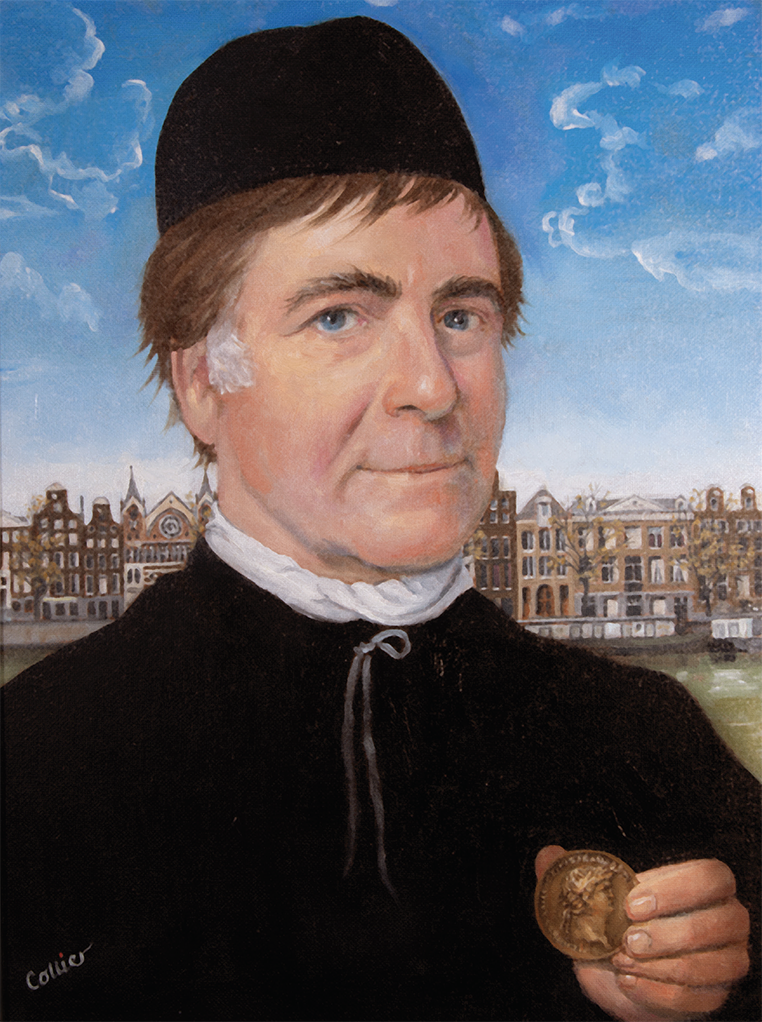American Journal of Numismatics 26 (2014)

The 26th volume of the American Journal of Numismatics is now in print. Subscribers should have already received their copies, but they are also available for purchase by individuals and libraries.
The first essay by Jonathan Kagan, “Notes on the Coinage of Mende,” examines the numismatic legacy of this important Greek city on the Chalcidic peninsula. Kagan’s piece ends with a consideration of the iconography of the bird found on many of the coins. Although traditionally described as a crow, some possible alternatives are proposed.
Evangeline Markou, Andreas Charalambous, and Vasiliki Kassianidou next offer a detailed chemical analysis of classical age Cypriot gold coins. The data derived from using an Innov-x Delta Engery-Dispersive XRF analyzer (pXRF) on 48 gold coins showed that the percentage of gold varied between 88.4% and 99.7%, which leads them to some interesting conclusions about the economic history of ancient Cyprus.
In “The Last Seleucids in Phoenicia: Juggling Civic and Royal Identity,” Panagiotis P. Iossif proposes that Phoenician cities were not as autonomous within the Seleucid kingdom as previously thought and suggests that coinage issued in this period was a form of annual tax payment to their Hellenistic rulers.
Elizabeth Wolfram Thill‘s contribution examines an innovative coin type that appeared during Trajan’ reign (AD 98-117). The article details fourteen new types of group scenes, i.e. ones that feature multi-figure action, and emphasizes how this reflected a connection between the emperor and the ‘common man.’ The relationship between the coins and monumental reliefs is also considered, and Thill suggests that it indicates that there was a remarkably integrated artistic climate during this period.
A die study of silver coinage of Cilician Aegeae during the reign of Hadrian (AD 117-38) by Florian Haymann shows that it was much more abundant than has been supposed, and leads him to argue that this was a kind of imperial beneficium by Hadrian, who took a special interest in the region.
Articles by Jack Nurpetlian and Dario Calomino also look at different aspects of coinage in the eastern provinces of the Roman Empire. Working with limited data, Nurpetlian was able to construct a useful die link diagram and employs statistical analysis to offer insights into the production of silver tetradrachms under Caracalla (AD 213-217), primarily minted in Damascus. Calomino’s contribution is a fascinating study of bilingual (Latin and Greek) coins of Severus Alexander (AD 222-235).
Saúl Roll-Vélez’s detailed analysis of antoniniani (left) issued immediately prior to and during the Diocletian reform of the coinage that began in AD 293 corrects some problems in the relevant RIC volume. Roll-Vélez argues that the CONCORDIA MILITVM antoniniani might have been minted as forerunners of the reform and reflected the larger drive towards standardization.
Daniela Williams and Antonino Crisà each provide studies of coin hoards; one found in Rome’s historical port of Ostia and the other unearthed near Palermo. Williams details a set of fifty-one bronze coins found dated to the mid-fourth century while Crisà focuses on the 1869 discovery of a terracotta vase full of silver coins near Cerda, of which forty-nine were recovered. Both articles bring a wealth of archival material to bear in contextualizing and understanding the respective coins in question.
Michael Fedorov’s contribution to the volume looks at early mediaeval Chachian coins and offers a new classification schema for the tamgha type.
Last but not least, François de Callataÿ answers a question that we have all been wondering about: “How poor are current bibliometrics in the humanities?” Naturally taking numismatic literature as his point of departure, Callataÿ shows how existing search engines and digital indexes fail to capture much of what has been and is being produced by numismatic scholars. The article points to both the massive amount of numismatic research being published and some of the attendant problems in getting that material properly indexed by the powers that be.
The review articles by ANS curators Gilles Bransbourg and David Hendin focus on Le monnayage de Maxence (2013) by Vincent Drost and Gold Coin and Small Change: Monetary Circulation in Fifth– Seventh Century Byzantine Palestine (2012) by Gabriela Bijocsky.
Again, the AJN 26 is available to order on the website, or you can call Catherine DiTuri to place your order at 212-571-4470, ext. 117. The list price is $75; ANS members may purchase it for $52.50.
386 pp, 62 pls | ISSN: 1053-8356 | ISBN: 978-0-89722-336-2


